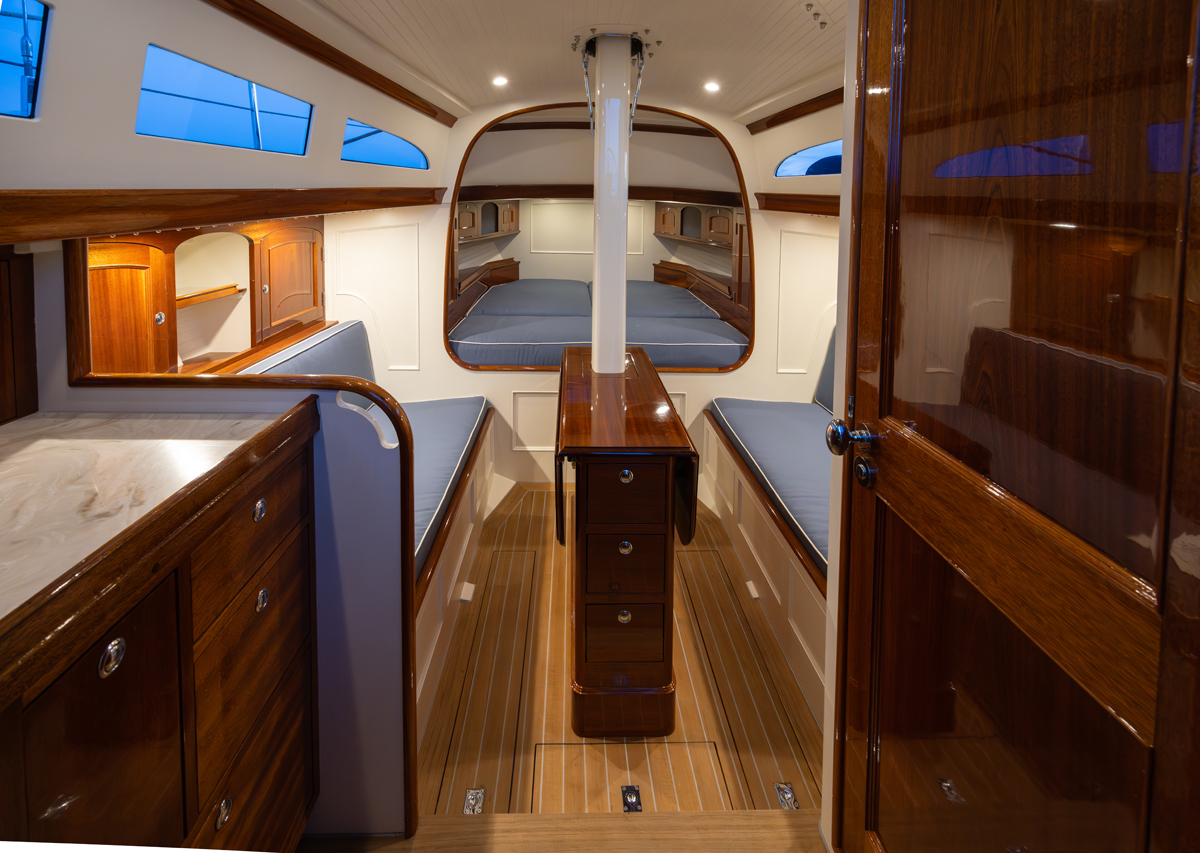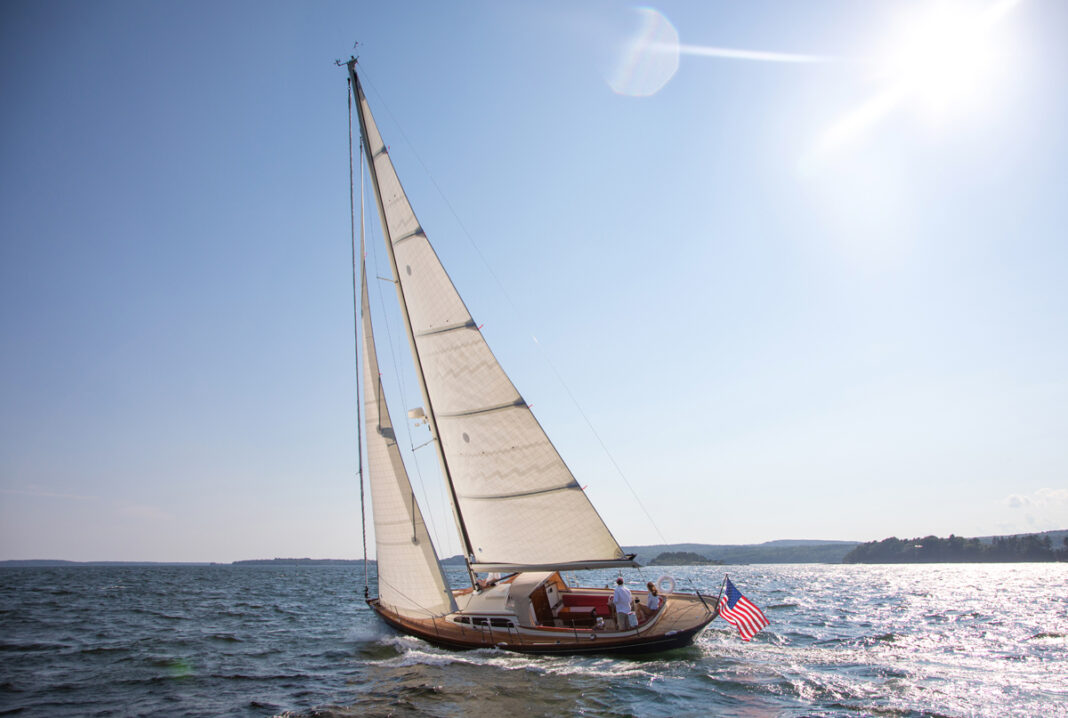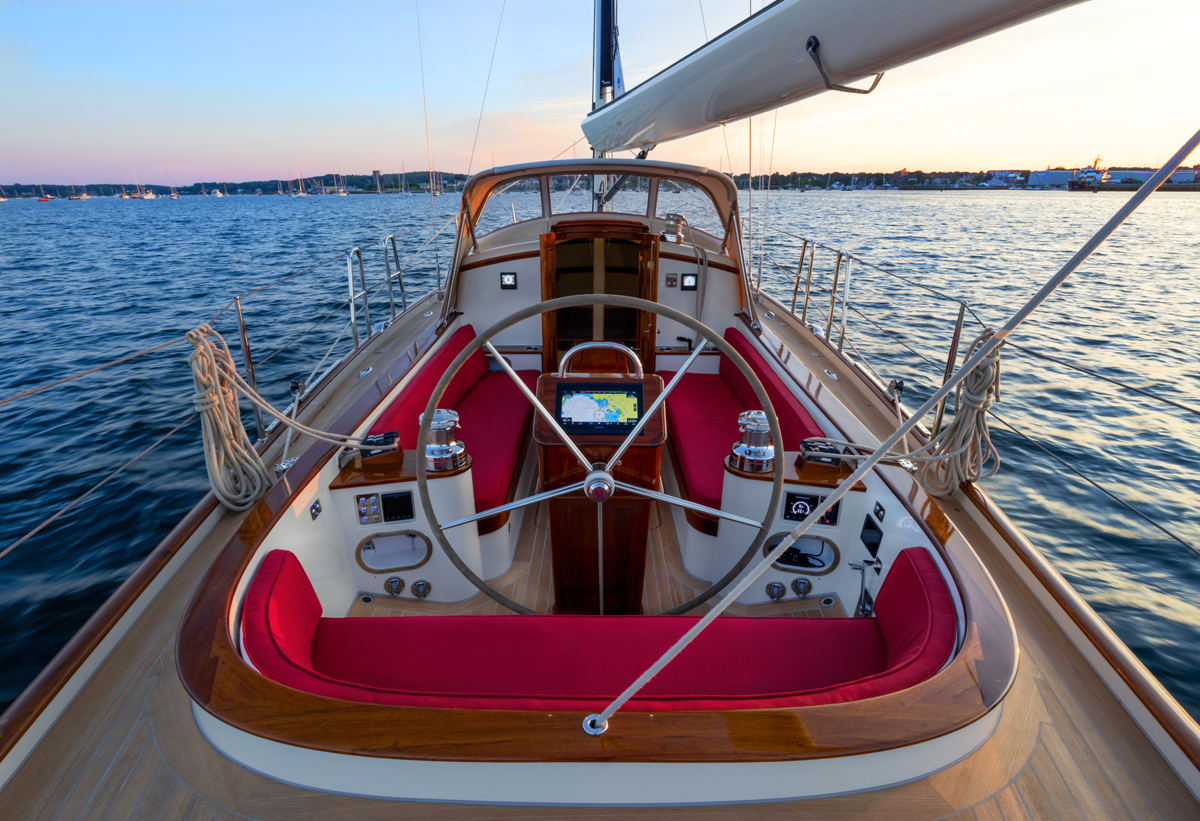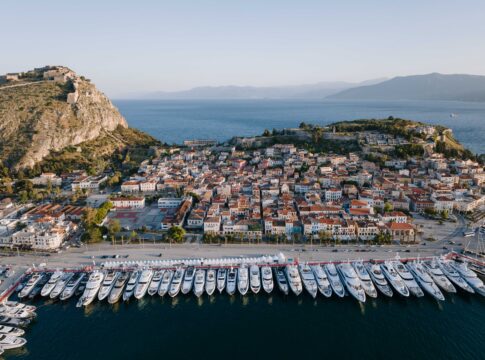Some boats are built for racing, others for languorous days of creek-hopping with family and friends; some inspire you to head for the far horizon, and others turn heads with their stunning looks and sublime craftsmanship.
Then there’s that rare breed that gathers all those things, and carries them even further – a classically styled, precisely engineered, bite-the-back-of-your-hand beautiful sailing yacht that combines the aesthetic of the golden age of sail with the functionality and capabilities of the modern performance cruiser. Artisanal built, shorthanded-capable, and crafted with meticulous care – welcome to Wisp, from the boards of Stephens Waring Design.
The Maine-based studio is no stranger to exceptional sailing and motor yacht projects that embody the Spirit of Tradition ethos, blending the best of classic yacht designs with the latest in materials and technology. The results speak for themselves – looks that get the heart skipping, and sailing capability that gets the heart racing. It’s the distillation of the iconic gentleman’s yachting lifestyle, delivered in a package designed to offer modern convenience for the modern gentleman sailor who appreciates elegance, precision and the timeless joy of sailing.
The design for the 12 metre Wisp was born, as with most of Stephens Waring designs, in the studio’s passion for the Spirit of Tradition ethos, but it was heavily driven by the owners’ requirements to which the studio applied their own spin to refine the aesthetic approach.
It had begun with a larger design drawn elsewhere. “When the owners explained their needs and wants to us,” begins Bob Stephens, “we quickly found they needed a smaller, easier-to-handle, and less expensive boat to accommodate their wishes for a comfortable daysailer. We began by exploring an idea of shrinking our 65-foot Anna design, which was launched from Lyman-Morse in 2018 – she features a bold deckhouse set well aft with a flush deck, and moderate classic overhanging ends.”
The inspiration is clear, shown for example in Wisp’s transom which harks back to traditional elliptical sterns from yachts like the classic schooner America and working types like the late-19th century Friendship sloops of Downeast Maine. But to this has been added modern sensibility to ensure the perfect blend of classic-modern cruising lifestyle. “As with all our designs, ergonomics are far more important than they ever were in classic yachts from 100 years ago,” Stephens asserts. “We work hard to study the needs of the human body, and design cockpits and accommodations around those dimensions while retaining the aesthetic appeal of classic lines and proportions.”
Wisp embraces a mid-century aesthetic with relatively shorter overhangs and more freeboard than many Stephens Waring designs which draw inspiration from early 20th-century racing classes. Wisp’s design allows for more practical, useful space in the cockpit and below, and a more robust, seakindly sailing experience – the ideal boat for the modern gentleman sailor. “We’re very proud of the shapely and roomy cockpit, with dedicated zones for sailing and lounging,” Paul Waring says. “Wrap-around seating and deep upholstery make for a truly luxurious experience. In addition, we’re always keeping up to date on modern equipment that can make the sailing and cruising experience more enjoyable and effortless. The trick is to work those components in while being sensitive to the need to blend with classic style.”
The result is a sublime lady of the sea with sublime sailing and handling characteristics, suitable both for lively and lazy days on the water, and easily handled even shorthanded thanks to a fractional sloop rig and electric furling. The large main delivers power, balanced by a small working jib with limited overlap; an electric roller-furling boom makes the main a breeze to handle, along with a hydraulically operated below-deck sheet and foot buttons for hands-free sailing. “The limited overlap of the jib makes tacking smooth and easy,” Waring adds. “There’s also a large electric-furling reacher for lighter-breeze days and off-wind sailing.”

The design team wanted the experience of sailing Wisp to be a fingertip sensitivity on the helm, with all lines and controls falling effortlessly to hand. Her powered sail-management systems are seamless and remove the need for physical strength, making her accessible to sailors of all ages and physiques. She is slippery and well-canvased enough to slip along in light airs, but powerful enough to feel safe and comfortable in a brisk sea-breeze.
What’s more, although the owners’ brief only included daysailing, their requirement for standing headroom below meant the design was already well on its way to being a great weekender. Knowing that future owners might be attracted to a multi-purpose boat, the exquisite interior was configured to include an inviting queen-size berth – and there are other modern creature comforts, too.
“One key feature for the owners was the ability to gracefully make a cup of hot coffee aboard while on a long daysail,” smiles Waring,
“so we designed a discreet custom drawer to accommodate their favourite coffee machine. Another touch was to style the love-seat settees with well-raked seats and backs to avoid that ‘sitting on a berth’ feeling, by providing true sofa-style seating even in a small boat.”
The nod to the classics extends into Wisp’s construction, which draws on the tradition of wood for the hull but worked in a thoroughly modern wood/epoxy composite construction method that also delivers a really comfortable, solid-feeling and lightweight structure. “Artisan Boatworks is well-versed in this method and was a natural fit for the build,” says Stephens. “We used strip-composite construction, where light cedar longitudinal strips form the hull skin and E-glass sheathing on inside and out stiffen and protect the wood strips for the best of all worlds.”
For Stephens, Wisp is the embodiment of the modern-classic crossover – the perfect yacht for the perfect yachting lifestyle. “If I owned her, I’d look forward to slipping away nearly every weekend for an overnight to a nearby island – a brisk sail in the afternoon sea breeze and low afternoon light,” he muses. “Get the hook down, shake a few ice cubes out of the refrigerator, set up the table leaves in the cockpit and watch the sun go down while sipping a cold drink. In the morning, take our time letting the breeze come up to a zephyr, unroll the reacher and ghost away into the building breeze, back to civilization.”
It sounds idyllic – just get used to a thousand admiring gazes when you get there.






